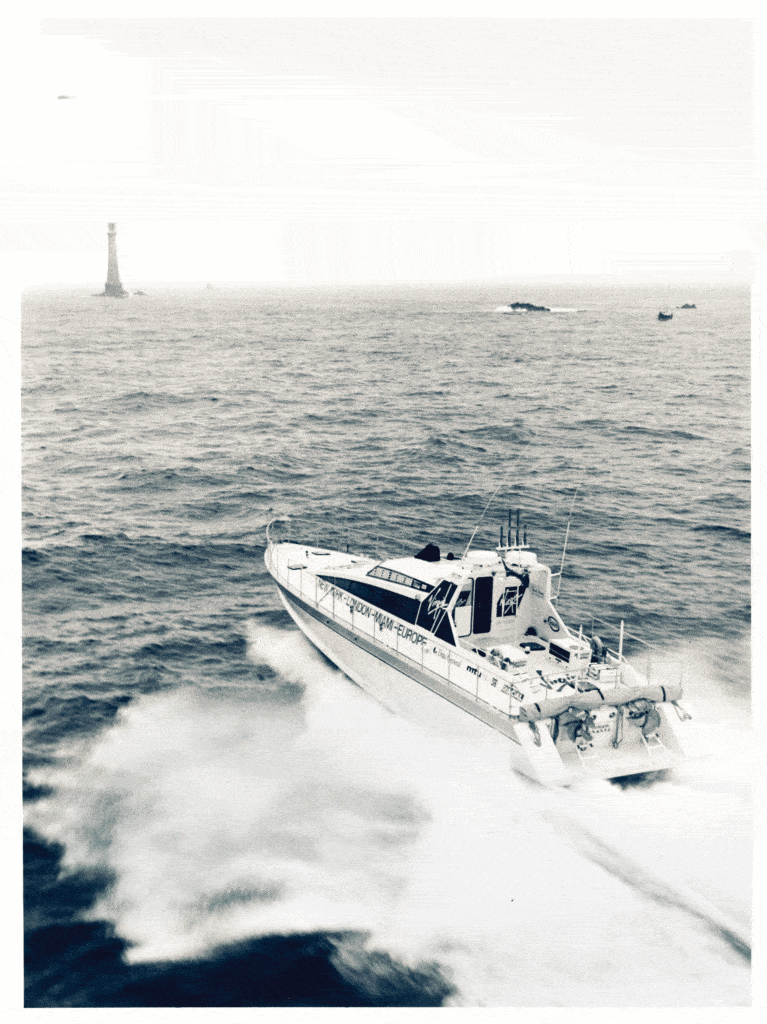
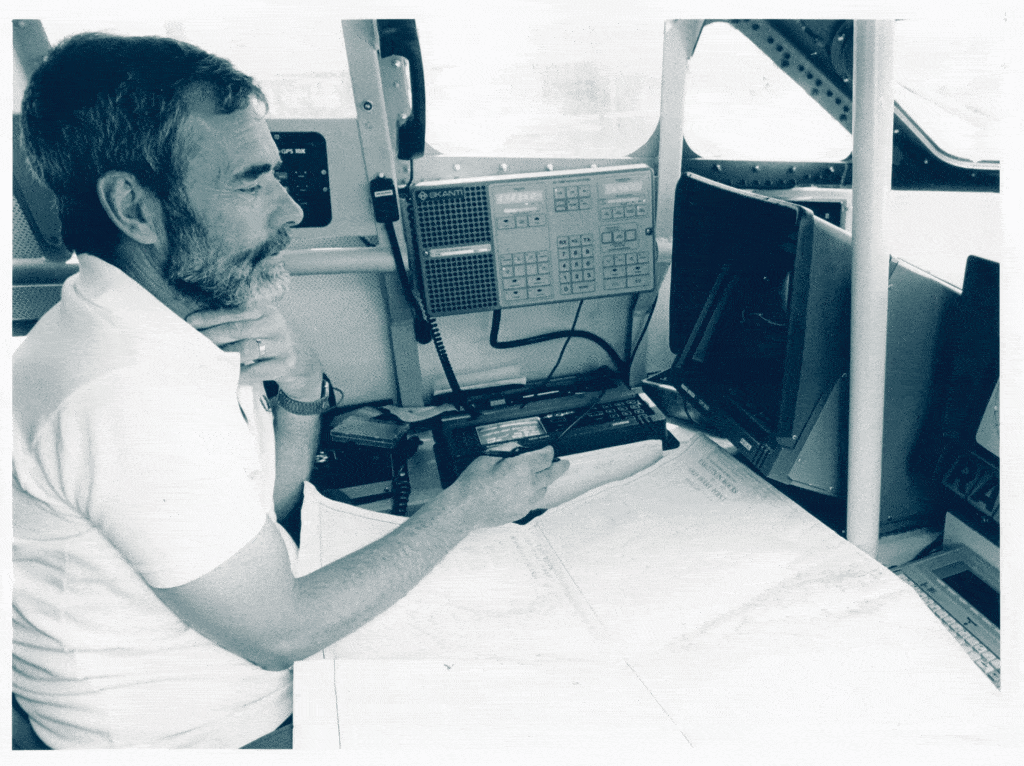
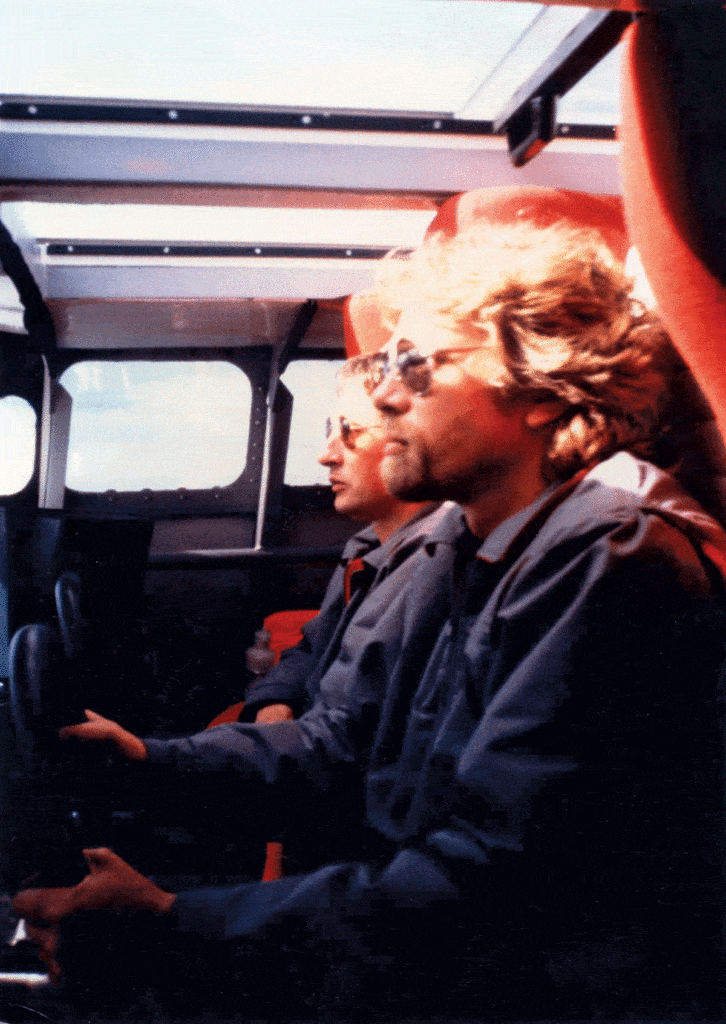
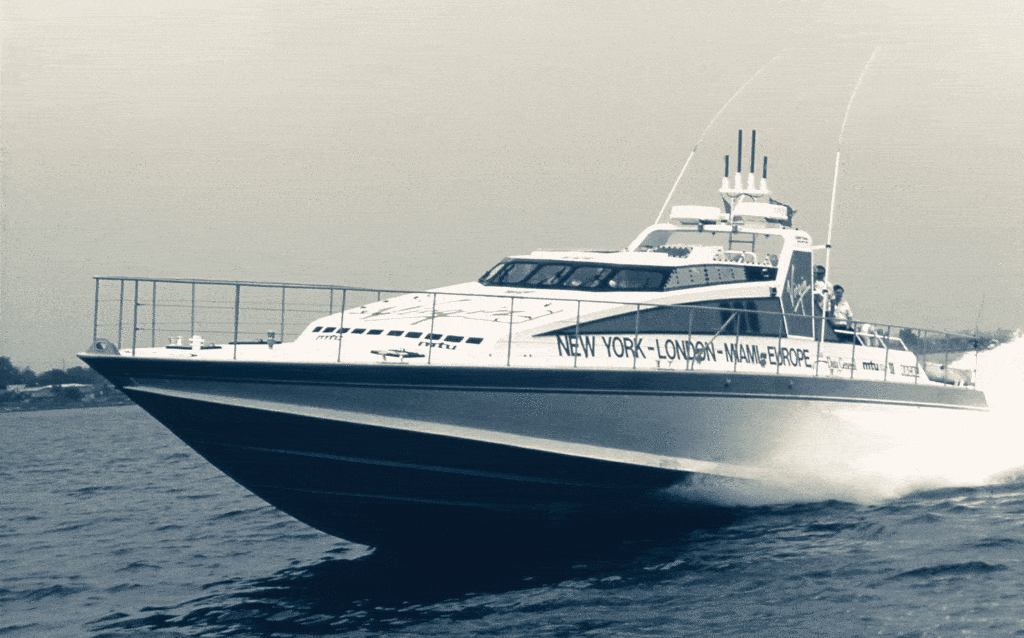
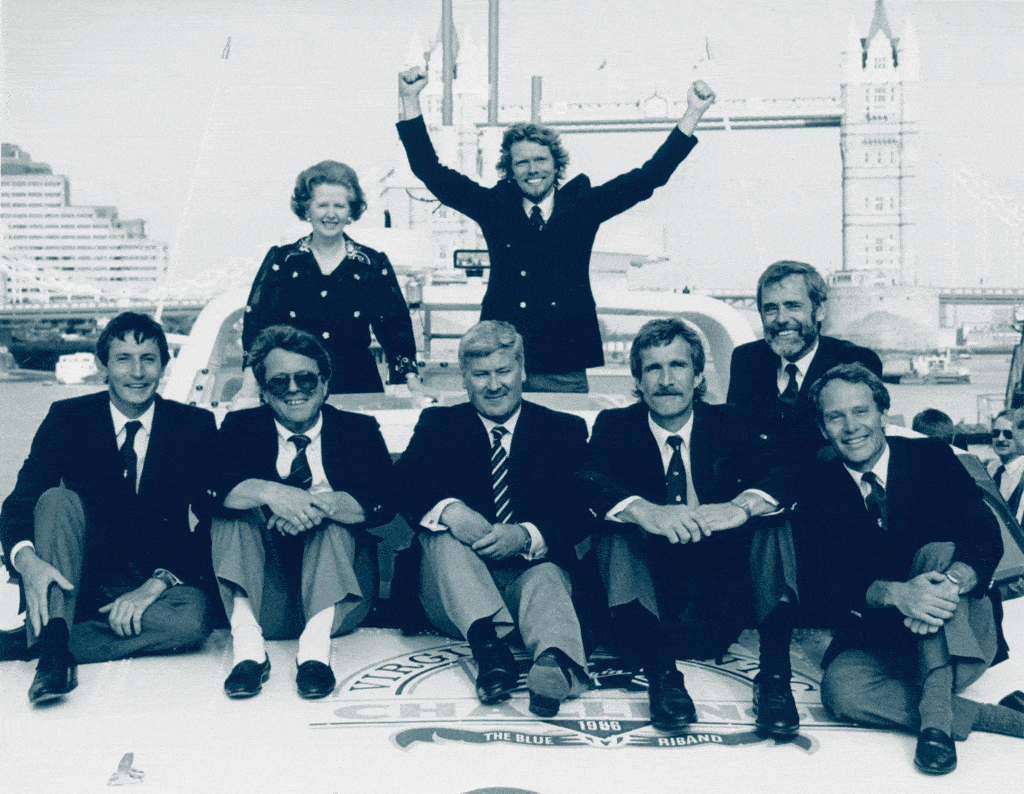
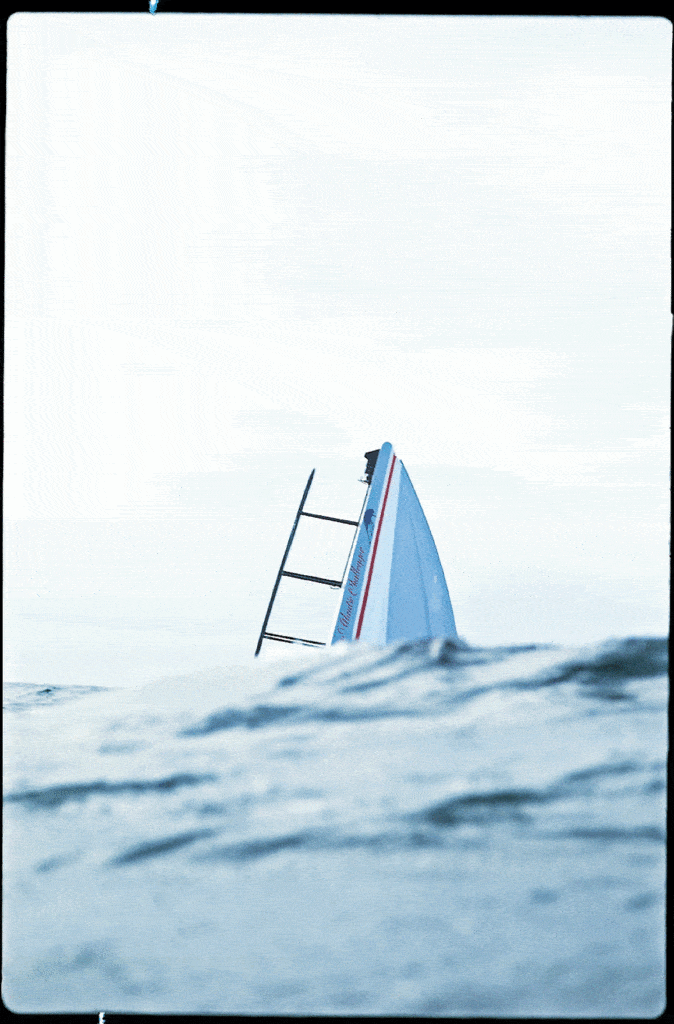
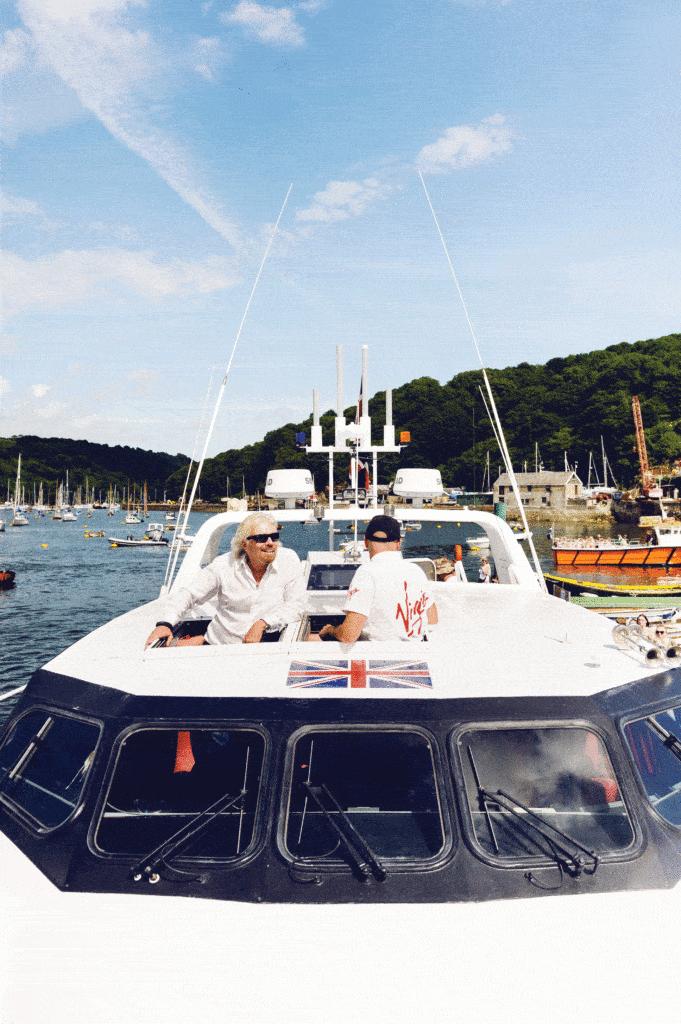
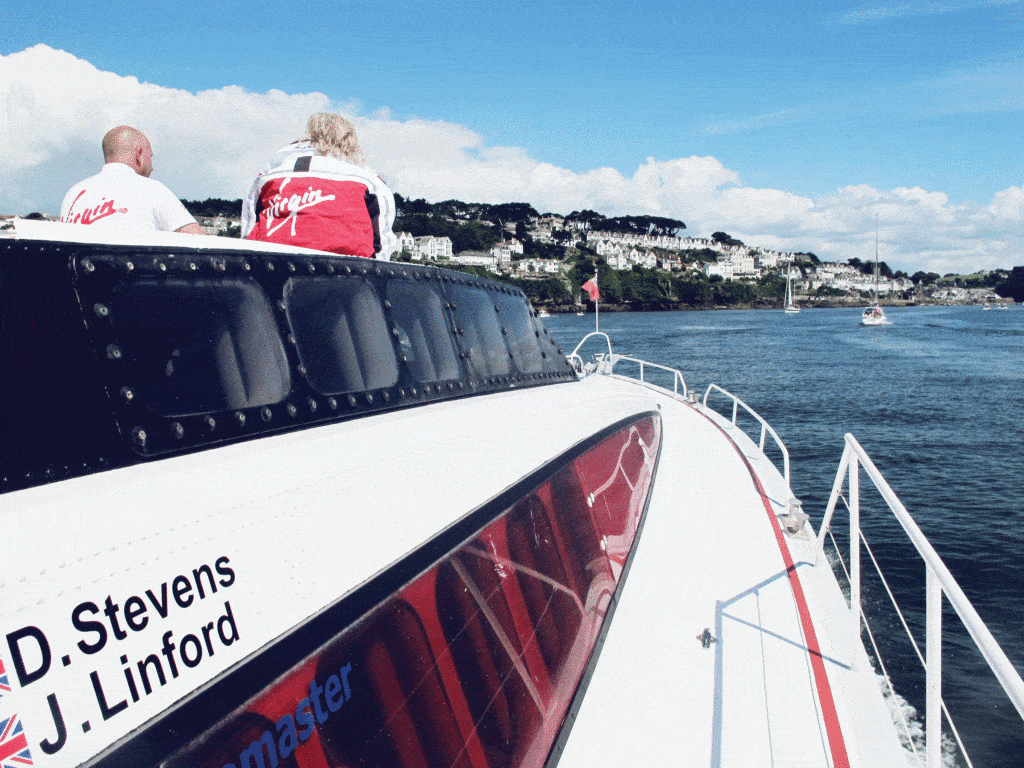
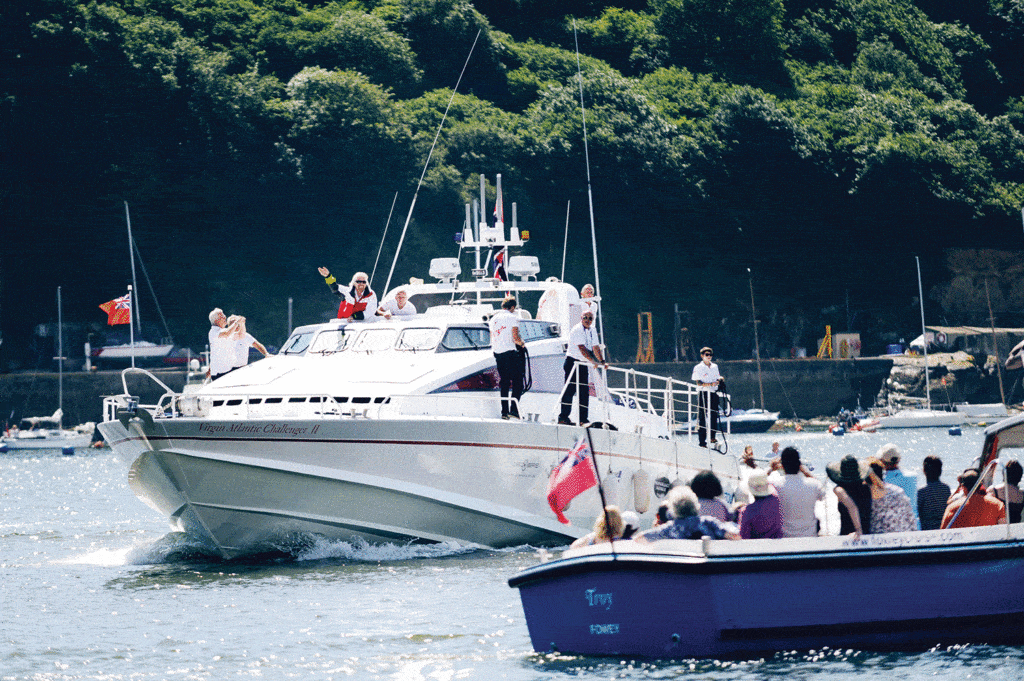
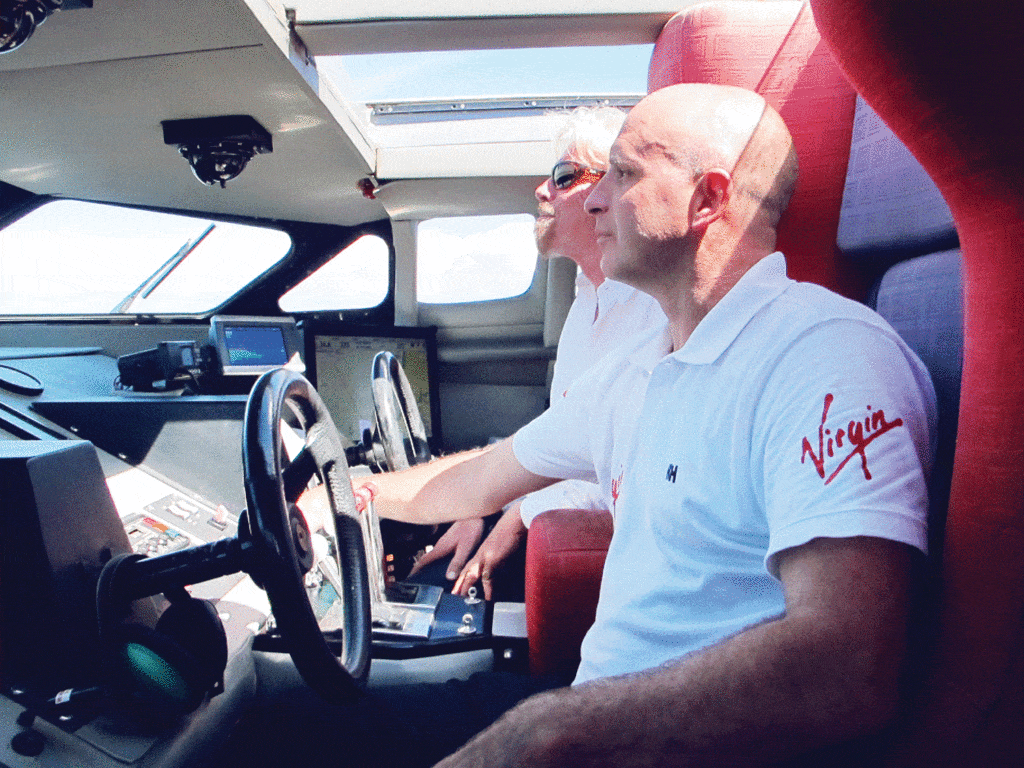
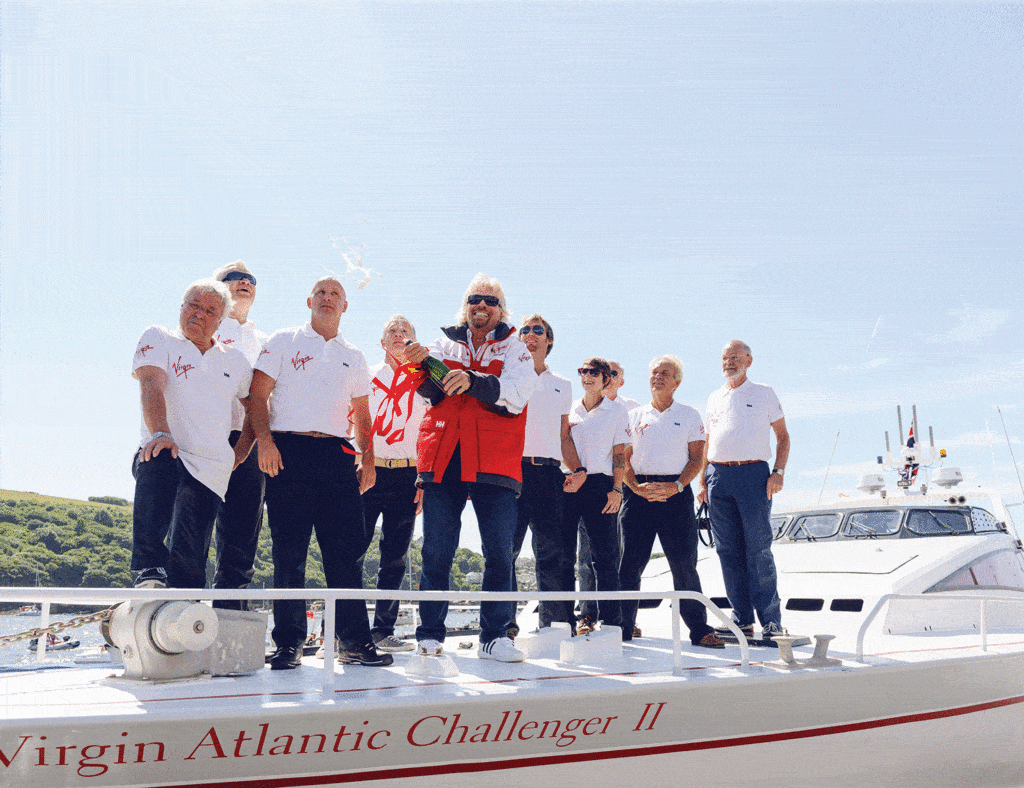
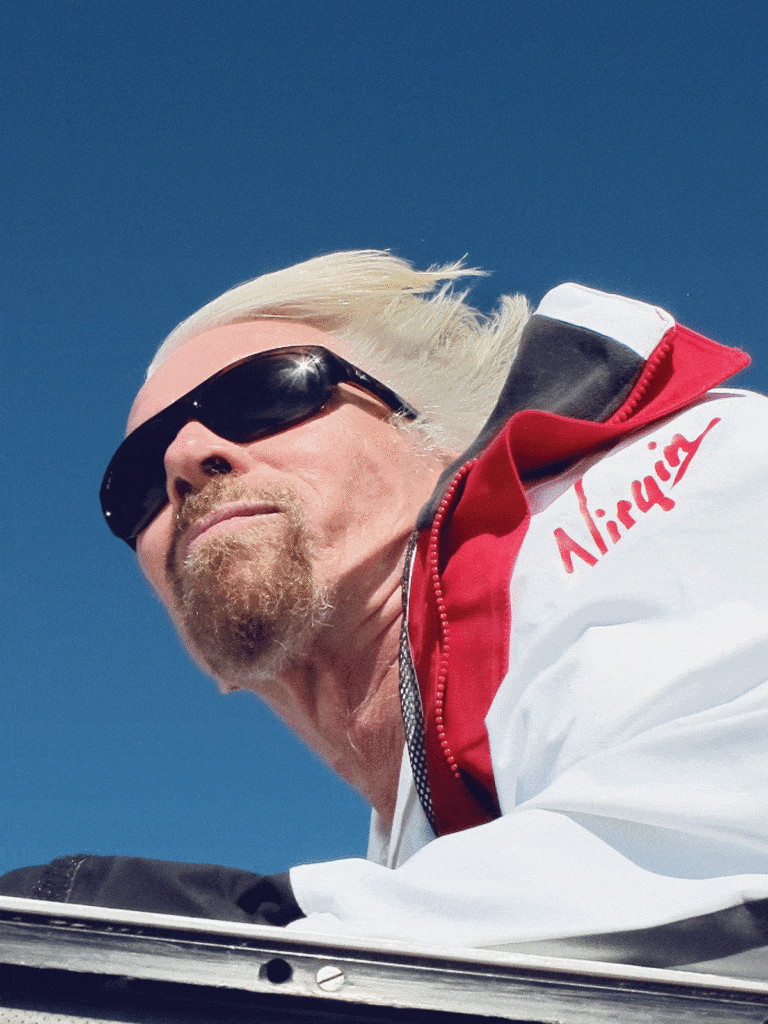
It was 6 a.m. in New York Harbor. In the shadow of lower Manhattan, six men boarded a boat and headed out into the Hudson River. Three and a half days later, they had crossed the Atlantic Ocean and were inked into the maritime history books. Twenty-seven years have since passed, and those six men, including me, now gray-haired and a bit wrinkled, recently boarded the same boat to revisit that transatlantic voyage. This time it was just a 20-mile coastal cruise to meet cheering crowds who remembered the historic seafaring adventure.
Richard Branson, now Sir Richard Branson, headed the team that planned to wrest the Atlantic crossing record from the liners that had dominated the ocean for the previous 100 years. It was his nascent airline, Virgin Atlantic, that sponsored the project.
It seemed like a crazy idea. No planning boat had ever crossed the Atlantic at speed, let alone set a record. But the sums added up. The first attempt was made by a crew on board a 65-foot Cougar catamaran called Virgin Atlantic Challenger, but the trip ended with the boat sinking just 120 miles from landfall. A second attempt, our trip, was made with a 72-foot aluminum monohull, trying to build upon the previous attempt’s experience.
It was a nervous crew that joined this new boat in New York Harbor. There was a vast 3,000 miles of ocean ahead, complete with fog, icebergs and rough seas, adding to the danger of a voyage that would run up the coasts of the United States and Canada to Cape Race in Newfoundland, and then across the Atlantic to a lighthouse on the southwest tip of Britain.
The reunion recalled a novel’s worth of stories. I was the navigator and weatherman for Virgin Atlantic Challenger II, and when we left New York, the first hazard was the Nantucket Shoals, 50 miles of uncharted shallow water. I’d decided to go across the shoals rather than go around to save time, hoping that we could spot the breaking waves on the shallows before we hit them. We negotiated the route safely, but shortly afterward the fog came down on us and lasted for the next 800 miles. It was quite scary running at 50 knots in fog, which was made even more hazardous when we entered iceberg alley off Newfoundland.
The icebergs showed up on radar, but my concerns were the bergy bits and growlers around them. We avoided them safely and made a refueling stop on the Grand Banks with a rig supply ship. This is where disaster almost struck. Crew member Steve Ridgway remembered it well: “Due to a mix-up with their systems, they gave us four tons of diesel and eight tons of water. Every time we fired up the MTU diesels, they stalled and it took us 10 hours to get rid of most of the water and top up with fuel again.”
We were ready to abandon the attempt and head for Newfoundland, but the weather had other ideas. A powerful storm came up behind us, leaving us no option but to cross the Atlantic with the engines still stalling about every half-hour. We were running out of fuel filters, but an air drop replenished our stock. At this point, we didn’t have much hope for the record. We just hoped to get home.
MTU engineer Eckie Rastig was the hero, living in that hellhole of an engine room and continually changing filters. The Irish Navy did a great job of refueling us midway, which got us to the final stage, but the weather deteriorated quickly. The fuel issues put us out of step with my chosen weather patterns, and that last night we were running at 50 knots in a Beaufort Scale Force 6 with the boat flying off the waves in the pitch black.
The impacts were horrendous, but, despite our desperate tiredness and the pain, there was a slim chance we could take the record. We kept going. Daylight brought some relief as the wind dropped, but the tension stayed until we passed the spot where the first Challenger had sunk.
“We listened to every beat of the engines on those last 200 miles,” said Branson. I was desperately checking the positions to make landfall at Bishop Rock Lighthouse. As we got close, a huge thunderstorm blanked out the radar and visibility, and upset the electronic-position system. We were running blind toward the rocks at 50 knots, and we held our collective breath. Finally, we saw the lighthouse and crossed the finish line with two hours to spare.
Closed up inside the tiny cabin, we had created our own little world, professionals getting on with the job at hand. Upon arrival, though, we were heroes. For the crew, it was a life-changing experience. Branson established his business empire, the Virgin Group. I got involved in four more Atlantic record attempts, including one under sail that ended in disaster. I also worked with the Italian Destriero attempt; the vessel currently holds the record with an average crossing speed of 53 knots. Ridgway, who originally worked for Cougar Marine, switched to Virgin and went on to become the CEO of Virgin Atlantic Airways.
Rastig set up his own engine refit business in Mallorca, Spain, and Peter McCann, who was the cameraman on board for BBC News, is now working on freelance business-management training. Sir Chay Blyth, who could not make the reunion voyage, set up his Challenge Business. Blyth was the first person to single-handedly sail around the world against prevailing winds and currents, and he did so on a 59-foot vessel called British Steel. His business venture included using a fleet of British Steel replica yachts that took amateur sailors to race around the world.
The boat we crossed aboard has her own continuing story as well. She was sold to Prince Rashid of Saudi Arabia and spent eight years in the Mediterranean, but she was used only a few times a year. She then spent 10 years out of the water and was auctioned by the storage yard. A British gentleman bought the vessel and commenced a restoration effort before he succumbed to cancer. Once more the boat was laid up, this time in Mallorca, and she was being considered for scrap when Englishman Dan Stevens bought her, restored her and brought her back to Britain.
“This boat is part of Britain’s maritime heritage, and I could not see it left to rot in Palma,” he said. “I brought it back to Britain, where it has attracted enormous attention. Everybody remembers where they were when VAC II broke the record. It was a pleasure to welcome the original crew on board for our short voyage down the coast, and it has made the boat much more personal to me.”
There were so many stories to share among those gray-haired men, remembering that almost-surreal odyssey. For me, the boat looked so small. I thought, Did we really cross the Atlantic at record speed in that? The MTU diesels are as good as new but have been detuned, so the boat’s speed has been reduced to 45 knots instead of 52. Even still, she felt just the same, exciting and responsive to drive — without having to dodge icebergs, peer through pea-soup fog and push through gale-force-powered storms, of course.








